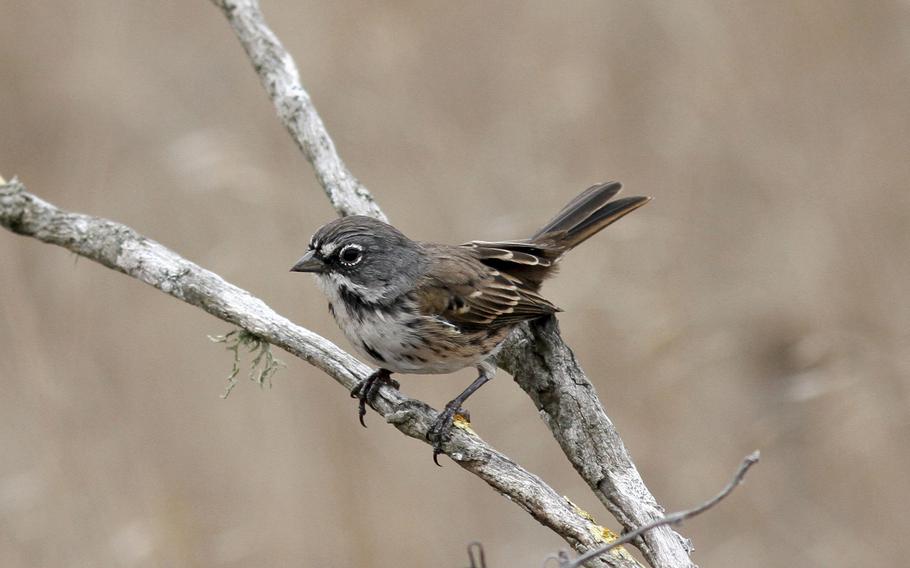
The San Clemente Island Bell's sparrow, also known as the Sage sparrow. (Nicole Desnoyers/Institute for Wildlife Studies)
Five animal and plant species native solely to a Navy-owned island off Southern California are no longer facing extinction after four decades of conservation efforts, the Department of Defense announced Tuesday.
The San Clemente Island Bell's sparrow, or Sage sparrow, flew off the U.S. Fish and Wildlife Service’s list of threatened species after landing there on Aug. 11, 1977, according to a DOD press release. It joins four San Clemente-native plants — the Island bush-mallow, paintbrush, Island lotus and Island larkspur — that had been on the service’s endangered list since 1977.
About 65 nautical miles west of San Diego, San Clemente Island is home to the Navy SEALs and the service’s only ship-to-shore live-fire range. Before the island was transferred to the service in 1938, intensive grazing by non-native herbivores largely stripped it of its habitat, causing declines in numerous native plants and animals, according to a Fish and Wildlife Service report to Regulations.gov.
The Navy has placed a priority on removing all non-native herbivores from the island, allowing the habitat to recover, according to the DOD release.
The San Clemente sparrow and plants were removed from the lists this month after scientific and commercial information indicated that their statuses have improved and threats have been eliminated or reduced to the point that they no longer meet the definitions of “threatened” or “endangered” under the Endangered Species Act of 1973, the Fish and Wildlife Service said in a statement posted to Regulations.gov.
"The recoveries we celebrate today in this unique place demonstrate what is possible when partners work together under the Endangered Species Act," the director of the Fish and Wildlife Service, Martha Williams, said in the DOD statement. "Across the nation, the Service and partners have ensured hundreds of species are stable or improving. We are grateful for the Navy's leadership and long-term commitment to recovery efforts that have enabled us to bring these species back from the brink of extinction."
Karnig Ohannessian, deputy assistant secretary of the Navy for environment and mission readiness, called the recoveries a milestone that should be celebrated.
“The Navy remains committed to our conservation efforts on San Clemente Island, and to be good stewards of the natural resources we manage as part of our national security mission," he said.